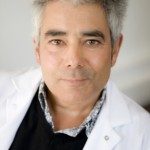Link to Pubmed [PMID] – 8319881
FEMS Microbiol. Lett. 1993 May;109(1):19-23
Transfer of mobilizable shuttle cloning vectors by conjugation from Escherichia coli to Staphylococcus aureus occurred at a very low frequency (10(-9) transconjugants per donor colony-forming unit after the mating period). It was observed that subinhibitory concentrations of penicillins (oxacillin or penicillin G) in the mating medium resulted in increased transfer frequency by conjugation of the shuttle vector pAT18 from E. coli SM10 to S. aureus 80CR5 Str (54-fold) and to Listeria monocytogenes LO17RF (45-fold). These results were interpreted as indicating that the cell wall of Gram-positive bacteria constitutes an important barrier for conjugative transfer of genetic information delivered from E. coli. It was also demonstrated that presence of a restriction system(s) in S. aureus recipients represented a major barrier to introduction of foreign DNA.

